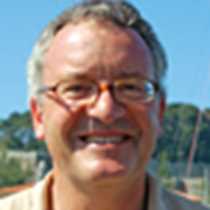Shetland Islands
Is there such a thing as a typical Lindblad day? Probably, almost by definition, there ought not to be. But today came close. Not long after an early breakfast, we were ashore on the island of Mousa (photo) to visit its celebrated Iron Age broch, a remarkable structure, possibly the tallest dry stone edifice ever constructed. A couple of nights ago at Calanais, the so-called “Scottish Stonehenge”, we had the benefit of a commentary from a young archaeologist from the University of Edinburgh who envied the fact that we were sailing for Mousa. It was an ambition of his to visit that celebrated site one day, but the journey from the Isle of Lewis to Mousa would be complicated indeed, time-consuming and expensive. On board the M. V. Endeavour such progressions seem all too easy.
Long before the first day trippers arrived we had completed our investigations: a bronze age burnt mound, a mediaeval click mill, a celebrated nesting site of the storm petrel not to mention Atlantic grey seals in the bay. Terns and skuas, fulmars and snipe defended their territory as is to be expected at the height of the breeding season. Pink sea thrift and blue squill colored the meadows. We crossed Moussa Sound to Lerwick on the Mainland where we had an hour or so for personal exploration of Shetland’s largest town (population 7000) before boarding buses for a visit to the archaeological site of Jarlshof in the south of the island. This is one of the premier archaeological sites of northern Europe with evidence of continuing occupation from the Neolithic through to the Mediaeval periods.
Revived by a Shetland tea, we proceeded to Sumburgh Head, an important colony of Atlantic seabirds where, in perfect weather conditions, we watched puffins, guillemots, razorbills, kittiwakes, fulmars, oystercatchers, and the arctic skua. Returning to the ship, we stopped to admire a group of Shetland ponies and look over the sound to Mousa whence we had come a few scintillating hours ago. Our evening recap picked up the threads of the day – archaeology, ornithology, botany – and stunning film from our underwater specialist of the marine environment of Shetland that we ourselves could not get to see. A unique blend of cultural and natural history in good company – a typical Lindblad day.
Is there such a thing as a typical Lindblad day? Probably, almost by definition, there ought not to be. But today came close. Not long after an early breakfast, we were ashore on the island of Mousa (photo) to visit its celebrated Iron Age broch, a remarkable structure, possibly the tallest dry stone edifice ever constructed. A couple of nights ago at Calanais, the so-called “Scottish Stonehenge”, we had the benefit of a commentary from a young archaeologist from the University of Edinburgh who envied the fact that we were sailing for Mousa. It was an ambition of his to visit that celebrated site one day, but the journey from the Isle of Lewis to Mousa would be complicated indeed, time-consuming and expensive. On board the M. V. Endeavour such progressions seem all too easy.
Long before the first day trippers arrived we had completed our investigations: a bronze age burnt mound, a mediaeval click mill, a celebrated nesting site of the storm petrel not to mention Atlantic grey seals in the bay. Terns and skuas, fulmars and snipe defended their territory as is to be expected at the height of the breeding season. Pink sea thrift and blue squill colored the meadows. We crossed Moussa Sound to Lerwick on the Mainland where we had an hour or so for personal exploration of Shetland’s largest town (population 7000) before boarding buses for a visit to the archaeological site of Jarlshof in the south of the island. This is one of the premier archaeological sites of northern Europe with evidence of continuing occupation from the Neolithic through to the Mediaeval periods.
Revived by a Shetland tea, we proceeded to Sumburgh Head, an important colony of Atlantic seabirds where, in perfect weather conditions, we watched puffins, guillemots, razorbills, kittiwakes, fulmars, oystercatchers, and the arctic skua. Returning to the ship, we stopped to admire a group of Shetland ponies and look over the sound to Mousa whence we had come a few scintillating hours ago. Our evening recap picked up the threads of the day – archaeology, ornithology, botany – and stunning film from our underwater specialist of the marine environment of Shetland that we ourselves could not get to see. A unique blend of cultural and natural history in good company – a typical Lindblad day.




